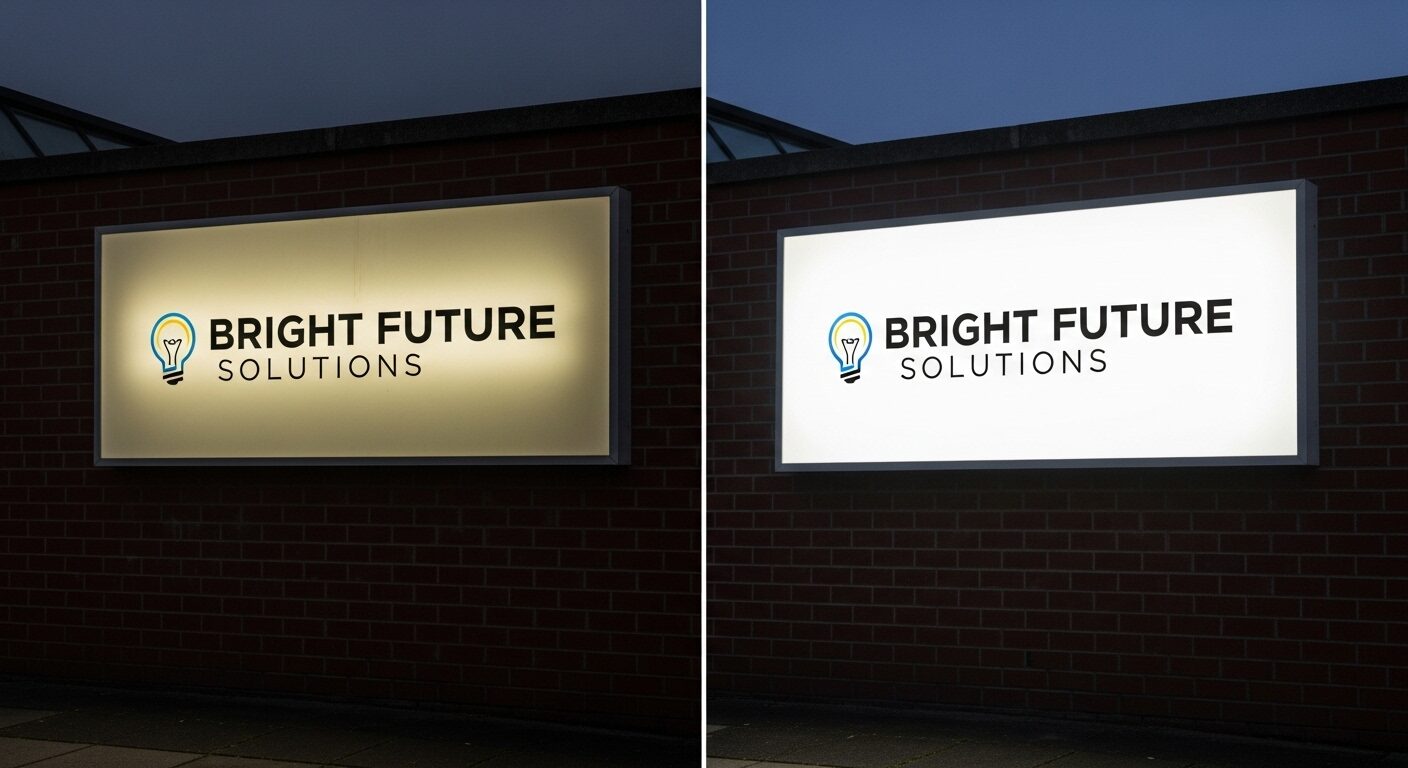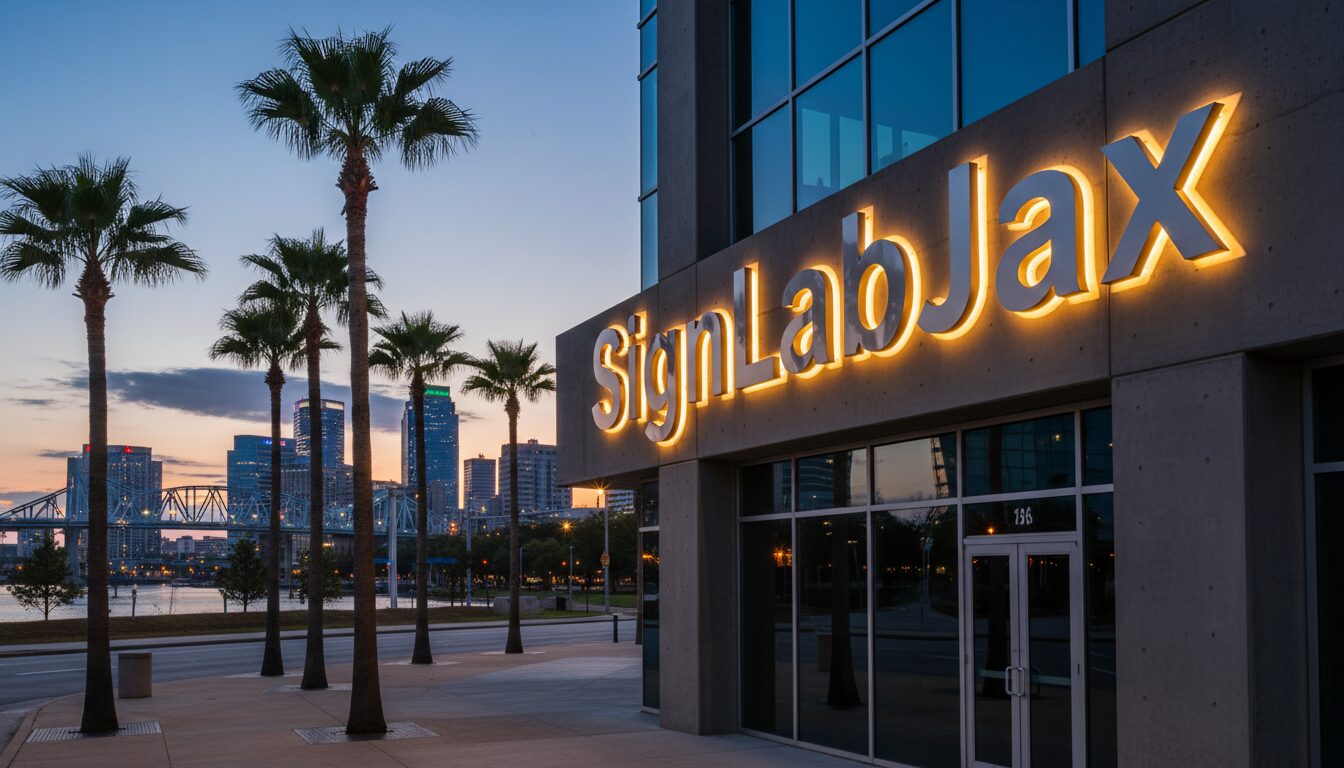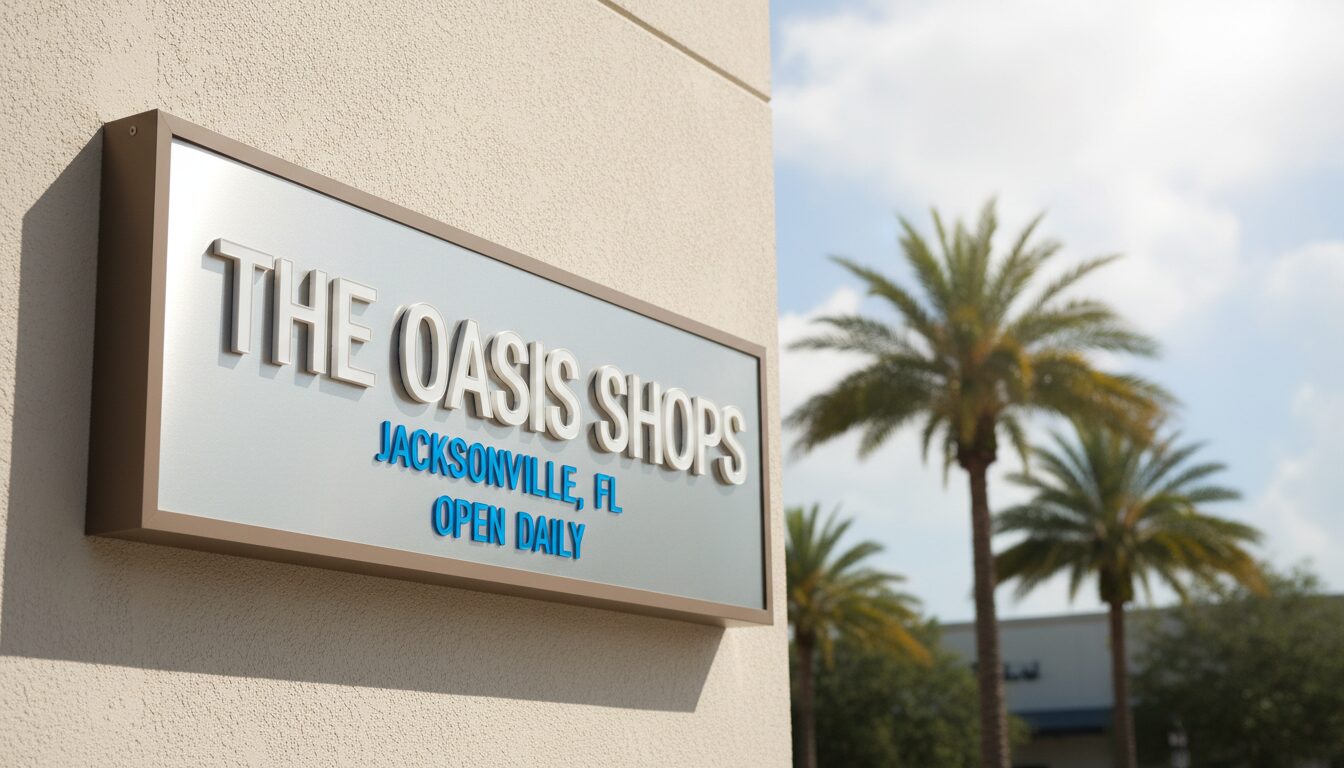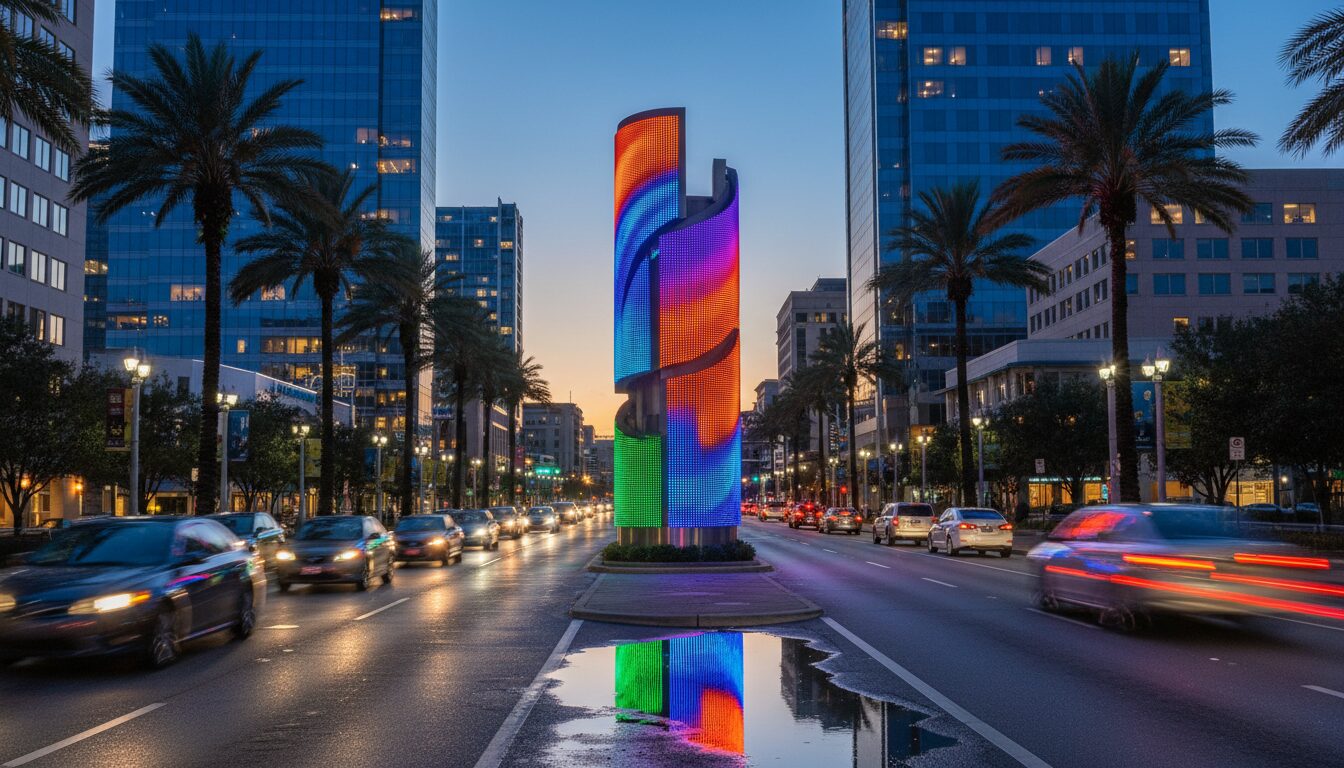In the past year, three specific sign upgrades have emerged as the most frequently requested improvements from businesses looking to enhance their visual presence and operational efficiency. These aren’t theoretical trends – they’re practical solutions that clients are specifically asking for based on real business challenges and measurable results they’ve observed from other companies.
What makes these upgrades particularly valuable is their track record of delivering immediate improvements in visibility, customer engagement, and operational convenience. Rather than experimental technologies or unproven concepts, these represent tested solutions that consistently provide return on investment for businesses across different industries and locations.
Understanding these popular upgrade requests helps business owners recognize practical opportunities for improving their existing signage while learning from the experiences of companies that have already implemented these enhancements successfully.
Upgrade #1: LED Conversion for Existing Signs
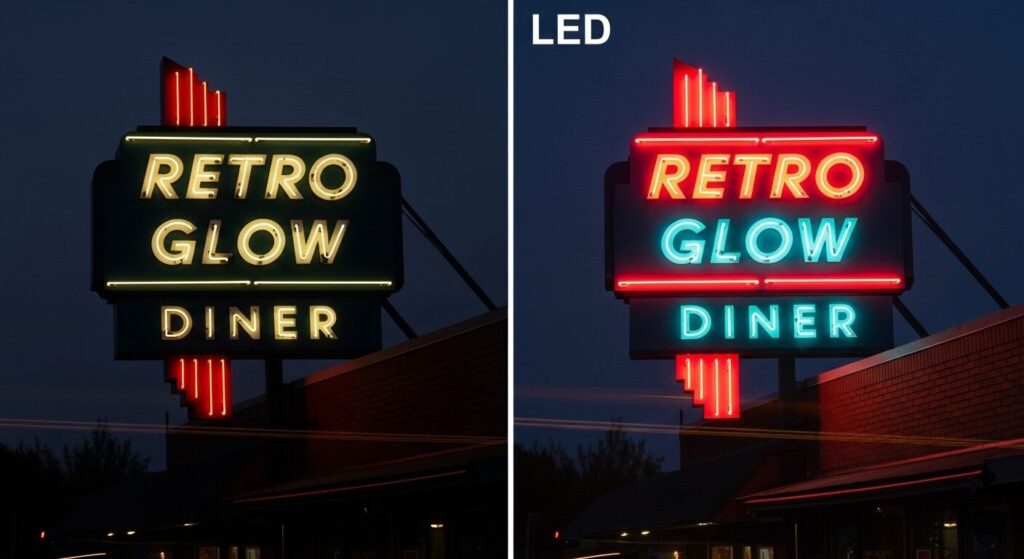
The most requested upgrade involves converting traditional lighting systems to LED technology, with clients consistently reporting significant improvements in visibility, energy costs, and maintenance requirements after making this transition.
Energy Cost Reduction represents the primary motivation driving LED conversion requests. Businesses report substantial decreases in electricity bills after upgrading their illuminated signage to LED systems. The energy efficiency of LED technology becomes particularly noticeable for businesses operating large signs or multiple illuminated displays.
Florida’s year-round business operations make energy efficiency especially valuable, with LED systems maintaining consistent performance despite high ambient temperatures that can reduce the efficiency of traditional lighting technologies. This reliability translates to predictable operational costs and consistent signage performance.
Brightness and Visibility Improvements have exceeded client expectations in most LED conversion projects. Modern LED systems provide superior brightness control, allowing signs to maintain optimal visibility during both bright daylight hours and evening conditions without the dimming that commonly affects traditional lighting.
Clients frequently comment on improved customer feedback regarding sign visibility after LED conversions. The enhanced color consistency and brightness uniformity create more professional appearances that strengthen brand perception and customer confidence.
Maintenance Simplification appeals strongly to busy business owners who appreciate the reduced maintenance requirements that LED systems provide. Traditional lighting often requires frequent bulb replacements, ballast repairs, and electrical maintenance that can disrupt business operations.
LED systems typically operate for years without requiring component replacement, and when maintenance is needed, the modular design of most LED installations allows for quick repairs that minimize business disruption. This reliability particularly benefits businesses in locations where accessing signage for maintenance presents logistical challenges.
Weather Resistance Enhancement has proven especially valuable for businesses dealing with Florida’s challenging climate conditions. LED systems resist humidity, temperature fluctuations, and UV exposure better than traditional lighting, maintaining performance and appearance throughout seasonal weather variations.
Clients report fewer weather-related signage failures after LED conversions, with systems continuing to operate effectively during storms and extreme weather events that previously caused lighting failures requiring emergency repairs.
Upgrade #2: Digital Message Centers for Flexible Marketing
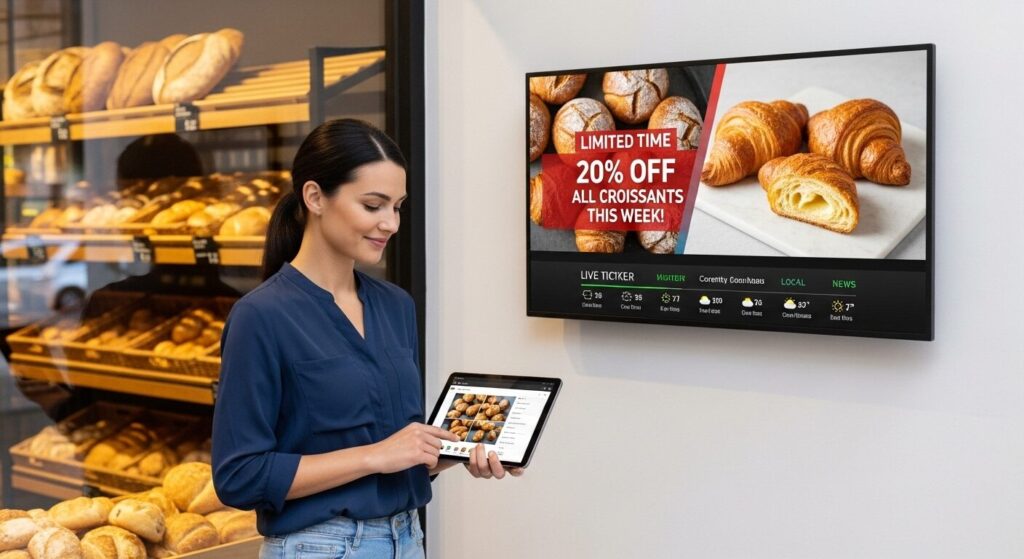
The second most popular upgrade request involves adding digital message capabilities to existing static signage, allowing businesses to update promotional content, announce events, and respond to changing market conditions without requiring new signage installation.
Real-Time Marketing Capabilities have transformed how businesses approach promotional messaging. Digital message centers enable immediate response to competitive promotions, weather conditions, inventory changes, or special events without the lead time and expense associated with traditional sign updates.
Restaurants use digital messaging to promote daily specials, adjust menu pricing, and highlight seasonal offerings based on ingredient availability or customer demand. Retail businesses update promotional messaging to reflect current sales, new arrivals, or limited-time offers that create urgency and drive immediate action.
Operational Efficiency Improvements result from the ability to update multiple locations simultaneously from central management systems. Multi-location businesses particularly appreciate the time savings and consistency achieved through centralized message management.
Business owners report significant time savings compared to previous processes for updating promotional materials, coordinating messaging across locations, or responding to competitive market changes. The ability to schedule messages in advance allows for more strategic marketing planning while reducing daily operational tasks.
Cost-Effective Promotion provides ongoing value that accumulates over time as businesses eliminate recurring costs for printed promotional materials, installation services, and design updates that traditional signage changes require.
The flexibility of digital messaging enables businesses to test different promotional approaches, measure customer response, and optimize messaging effectiveness based on actual performance data rather than assumptions about customer preferences.
Seasonal Adaptation Capabilities allow businesses to adjust messaging based on weather conditions, tourist seasons, or local events that affect customer behavior and preferences. This responsiveness helps maximize business opportunities while maintaining relevant customer communication.
Jacksonville businesses particularly benefit from the ability to adjust messaging based on seasonal tourism patterns, weather-dependent activities, or local events that create temporary changes in customer demographics or preferences.
Upgrade #3: Interactive Elements for Customer Engagement
The third most requested upgrade involves adding interactive features to existing signage, creating customer engagement opportunities that extend beyond traditional advertising to provide practical functionality and memorable experiences.
QR Code Integration has become the most accessible form of interactive upgrade, allowing businesses to bridge physical signage with digital experiences without requiring complex technology installation or significant investment.
Restaurants integrate QR codes that link to digital menus, online ordering systems, or nutritional information, reducing contact requirements while providing enhanced customer convenience. Retail businesses use QR codes to connect customers with product reviews, size guides, or exclusive online promotions.
The versatility of QR codes allows for easy updates and modifications as business needs change, with the ability to redirect codes to new destinations without requiring physical signage changes.
Touchscreen Directory Systems have gained popularity among businesses with complex layouts or multiple services, providing customer convenience while reducing staff time spent providing directions or basic information.
Medical facilities use touchscreen directories for patient check-in, appointment scheduling, and wayfinding assistance, improving patient experience while reducing reception desk congestion. Shopping centers implement directories that highlight current promotions, store locations, and special events.
Professional buildings benefit from touchscreen systems that provide tenant directories, building information, and visitor management capabilities that enhance the overall property experience while reducing management overhead.
Smart Lighting Integration creates dynamic visual effects that capture attention while providing practical benefits such as automatic brightness adjustment and energy optimization based on ambient conditions.
Motion-activated lighting draws attention to signage when potential customers approach while conserving energy during periods of low activity. Color-changing capabilities enable businesses to coordinate signage with seasonal themes, special events, or promotional campaigns.
Programmable lighting sequences can highlight different signage elements at different times, drawing attention to specific messages or creating visual interest that distinguishes the business from competitors using static lighting approaches.
Mobile App Connectivity enables signage to interact with smartphone applications, providing personalized information, exclusive offers, or enhanced functionality for customers who engage with the business through multiple channels.
Loyalty program integration allows signage to recognize returning customers and display personalized offers or information based on purchase history or preferences. Location-based notifications can alert customers to special promotions when they approach the business location.
Implementation Considerations for Popular Upgrades
Successfully implementing these popular upgrades requires understanding both the technical requirements and the operational changes that each enhancement involves. Proper planning ensures maximum benefit while minimizing disruption to ongoing business operations.
Budget Planning for sign upgrades varies significantly depending on the scope and complexity of desired improvements. LED conversions typically provide the fastest return on investment through energy savings, while digital and interactive upgrades offer longer-term benefits through enhanced marketing capabilities and customer engagement.
Most businesses find that phased implementation allows for budget management while providing immediate benefits from each completed upgrade phase. This approach also enables businesses to evaluate results and adjust subsequent upgrade plans based on actual performance and customer response.
Integration with Existing Systems requires careful planning to ensure new features work seamlessly with current business operations, point-of-sale systems, or customer management platforms. Professional consultation helps identify integration requirements and potential compatibility issues before installation begins.
Maintenance and Operation requirements differ among upgrade types, with LED conversions typically reducing maintenance needs while digital systems may require periodic updates or content management attention. Understanding these requirements helps businesses plan appropriate support arrangements.
Permit and Compliance Considerations may apply to certain upgrade types, particularly when modifications affect sign size, lighting intensity, or electrical requirements. Professional signage companies handle permit applications and ensure compliance with local regulations.
Measuring Upgrade Success
Clients who implement these popular upgrades typically track specific metrics to evaluate success and optimize their investment returns. Understanding these measurement approaches helps businesses set appropriate expectations and identify areas for continued improvement.
Energy Cost Tracking provides immediate feedback on LED conversion effectiveness, with most businesses seeing noticeable reductions in electricity bills within the first month after installation. Long-term tracking helps quantify total savings and return on investment over time.
Customer Engagement Metrics help evaluate the effectiveness of digital and interactive upgrades through tracking of QR code usage, touchscreen interactions, or mobile app engagement rates. These metrics provide insights into customer preferences and behavior patterns.
Operational Efficiency Improvements can be measured through time savings in messaging updates, reduced maintenance calls, or decreased staff time spent providing information that interactive systems now handle automatically.
Customer Feedback Collection provides qualitative insights into how upgrades affect customer perception and experience, helping businesses understand the broader impact of their signage improvements beyond quantitative metrics.
Frequently Asked Questions About Popular Sign Upgrades
How long do these upgrades typically take to complete?
LED conversions usually require one to two days depending on sign complexity and electrical requirements. Digital message center installations typically take two to five days including programming and testing. Interactive feature additions vary based on complexity but generally require three to seven days for complete installation and setup.
Can existing signs accommodate these upgrade types?
Most existing illuminated signs can be converted to LED technology with appropriate electrical modifications. Digital message centers can often be integrated with existing sign structures, though electrical upgrades may be required. Interactive features typically require additional power and connectivity considerations that professional evaluation can determine.
What ongoing costs should businesses expect after these upgrades?
LED conversions typically reduce ongoing costs through energy savings and decreased maintenance requirements. Digital systems may involve monthly connectivity or software licensing fees depending on management platform choices. Interactive systems generally have minimal ongoing costs beyond standard electrical and internet connectivity.
How do these upgrades affect sign warranties or service agreements?
Professional upgrade installations typically include warranties on new components while preserving existing warranties on unmodified sign elements. Service agreements can usually be adjusted to cover new technology components and maintenance requirements specific to upgraded systems.
Are financing options available for these upgrade projects?
Many signage companies offer financing options for upgrade projects, allowing businesses to implement improvements while spreading costs over time. LED conversions often qualify for energy efficiency financing programs that provide favorable terms based on projected energy savings.
How do businesses choose which upgrade provides the best value?
The best upgrade choice depends on specific business objectives, current signage condition, and operational requirements. LED conversions typically provide the fastest payback through energy savings, while digital and interactive upgrades offer longer-term marketing and engagement benefits that align with different business priorities.
Getting Started with Popular Sign Upgrades
These three popular upgrades represent proven approaches to enhancing business signage based on real client experiences and measurable results. The key to successful implementation lies in understanding how each upgrade aligns with your specific business objectives and operational requirements.
Professional consultation helps determine which upgrades provide the greatest value for your particular situation while ensuring proper installation and optimal performance. The popularity of these upgrades reflects their track record of delivering practical benefits that justify the investment through improved operations and enhanced customer engagement.
Ready to explore how these popular sign upgrades can benefit your business? Contact SignLab JAX today to discuss which practical improvements align with your business objectives and learn how these client-requested upgrades can enhance your signage effectiveness and operational efficiency.

